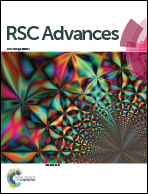Anatase TiO2 nanotube arrays with high temperature stability
Abstract
The anatase phase of titanium dioxide (TiO2) plays an important role in applications such as photo-catalysis and photo-voltaics. The stability of this crystalline phase is however limited to about 600 °C because of the onset of anatase to rutile phase transformation. In the case of aligned and oriented nanostructures such as electrochemically anodized TiO2 nanotube arrays (TNTs), the retention of the aligned and oriented morphology, in addition to a stable anatase phase, poses further challenge for high temperature processing of such materials. Here we report a simple solvothermal processing step for the as-prepared, amorphous TNTs that helps in retaining the nanotube architecture along with a stable anatase phase up to a temperature of about 800 °C. It is observed that the smoother walls of amorphous TNTs are transformed into particulate/granular morphology as a result of the solvothermal treatment that confines anatase crystallites preventing further growth during high temperature annealing. A phonon-scattering mechanism at the particle interfaces is proposed to explain the very limited crystallite growth and preservation of the anatase phase. Furthermore, the robust and compact morphology of the nanotube arrays induced by solvothermal treatment also contributes to their ability to retain tubular architecture at higher temperatures. We also report gas sensitivity and photo-current density of the solvothermally treated anatase TNTs annealed at 800 °C that show significant enhancement of these properties over the conventional TNT samples annealed at 550 °C. The reported work thus presents an important advancement in the synthesis and structural modification of TiO2 nanotube arrays, which not only leads to enhancement of properties but also opens up possibilities for high temperature applications.


 Please wait while we load your content...
Please wait while we load your content...